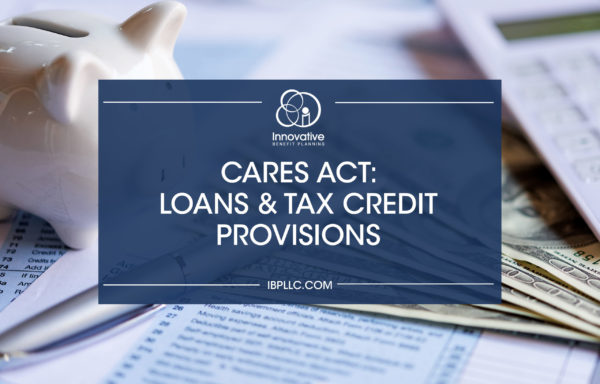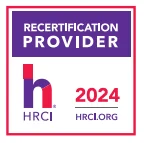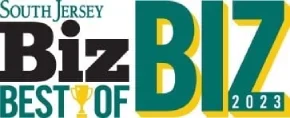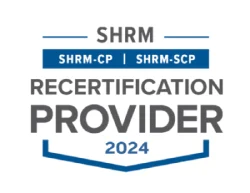CARES Act: Loans & Tax Credit Provisions

CARES Act: Loans & Tax Credit Provisions
On March 27, 2020, Congress passed, and the President signed, an unprecedented 2 trillion-dollar stimulus and relief package into law, named the Coronavirus Aid, Relief, and Economic Security Act or the CARES Act. This act provides direct stimulus relief to corporations and individuals. A large piece of this Act is its loan provisions (which in some cases are forgivable) and tax credit provisions. Below are the details of these provisions:
Paycheck Protection Program
Overview
The Paycheck Protection Program (PPP) authorizes up to $349 Billion in forgivable loans to small businesses to pay their employees during the COVID-19 crisis. All loan terms will be the same for everyone under this program.
What is Available?
Small Businesses are eligible for forgivable loans up to the lesser of 10 million dollars or 2.5 times the average total monthly payroll costs incurred in the one-year period prior to the date of the loan plus the outstanding balance of any loans under the SBA’s Disaster Loan program between 1/31/20 and the date the loan may be refinanced under this new program.
Who Can Apply?
In addition to a business qualifying as a “small business concern” under the Small Business Act, any business concern, nonprofit organization, veterans organization, or tribal businesses (each, a Covered Entity) is eligible to receive a Paycheck Protection Loan during the Covered Period if the Covered Entity employs not more than the greater of:
- 500 employees (includes individuals employed on a full-time, part-time or other basis) or
- if applicable, the size standard in number of employees established by the SBA for the industry in which Covered Entity operates.
There are special exceptions to standard SBA regulations that relax eligibility restrictions for certain Covered Entities during the Covered Period. For example, a Covered Entity in the hospitality and dining industry designated as such under Sector 72 of the North American Industry Classification System (NAICS) that employs fewer than 500 employees per physical location is eligible to receive a loan. In addition, federal regulations that reduce eligibility by testing size based on affiliations with related parties will be waived in limited circumstances.
How Can Funds Be Used?
The proceeds of a Paycheck Protection Loan may be used to pay for only the following items (in each case, subject to certain specified exclusions):
- Payroll Costs
- Costs related to group health care benefits during periods of paid sick, medical or family leave, and insurance premiums,
- Employee salaries, commissions, or similar compensations,
- Mortgage interest payments (but not any prepayment of or payment of principal on a mortgage obligation),
- Rent
- Utilities and
- Interest on any other debt obligations that were incurred before the Covered Period.
Maximum Loan Amount & Calculation Methodology
During the Covered Period, the maximum loan amount permitted for an eligible Covered Entity is the lesser of $10,000,000 and an amount calculated based on a payroll formula that essentially equals 2.5x the average total monthly payroll cost incurred in the one-year period before the loan is made. Payroll costs include:
- Salary/wages/tips
- Sick/family leave/PTO
- Severance payments
- Group health benefits (including insurance premiums)
- Retirement benefits, and
- State or local taxes assessed on employee compensation
For any employee who is paid more than $100,000 salary, only the amount up to $100,000 (prorated for the covered period) is calculated into the number.
Interest Rate and Maturity Date
The interest rates for loans borrowed by a Covered Entity under the program under the program are set at 1% and loans begin accruing interest after six months. Any Paycheck Protection Loan that has a remaining principal balance after any applicable loan forgiveness (as covered in detail below) must have a maturity date no later than 2 years from the date on which the borrower applied for loan forgiveness.
Payment Deferral
The SBA will direct lenders to defer all payments (principal, interest and fees) otherwise due under a Paycheck Protection Loan for a minimum of 6 months and a maximum of 12 months.
Collateral or Other Credit Support
A borrower will not be required to pledge any collateral or provide personal guarantees to secure or support a Paycheck Protection Loan.
Loan Forgiveness (and Potential Reduction in the Forgiveness Amount)
During the 8-week period beginning on the date a Paycheck Protection Loan is funded (the Forgiveness Period), a borrower will be eligible for forgiveness and cancellation of indebtedness for up to the full principal amount of such loan. However, there is a caveat that at least 75% of the loan has to be used for payroll costs in order for the loan to be forgivable. The amount eligible for forgiveness (the Total Eligible Forgiveness Amount) is equal to the total costs incurred and payments made during the Forgiveness Period for:
- Payroll,
- Mortgage interest
- Rent and
- Utilities
- Interest on loans in force prior to 2/15/20
The loan forgiveness amount available to a borrower is subject to reduction if the borrower terminates employees or reduces employee salary and wages during the Forgiveness Period. There is, however, relief from the forgiveness reduction if the borrower rehires employees or makes up for wage reductions by June 30, 2020.
Lender Eligibility
Lenders who are already authorized to make loans under the SBA’s existing 7(a) loan program are automatically eligible to make Paycheck Protection Loans. The SBA and the Treasury Secretary will extend eligibility to additional qualified lenders that do not currently participate in such program. Participating lenders will be permitted to determine borrower eligibility under the Paycheck Protection Program and will be entitled to make and approve Paycheck Protection Loans, without SBA review. Participating lenders will be directed to underwrite loans not based on borrower repayment ability, but rather whether the borrower was in operation on February 15, 2020, with one or more employees or independent contractors.
Program Fees
The SBA will not charge any fees on a Paycheck Protection Loan. Participating lenders will be entitled to charge a fee, as a percentage of the original principal balance of the Paycheck Protection Loan, not to exceed the following amounts:
- For a loan with original principal balance of $350,000 or less, 5%;
- For a loan with original principal balance greater than $350,000 but less than $2 million, 3%; and
- For a loan with original principal balance of $2 million and above, 1%.
Agents that assist borrowers in preparing an application for a Paycheck Protection Loan will be entitled to a fee not to exceed the amount prescribed by the SBA for such services.
Economic Injury Disaster Loan (EIDL)
Overview
While Economic Injury Disaster Loans (EIDL) were available prior to the CARES Act, we felt it was important to include information on these loans since they are available to small business during the COVID-19 outbreak. However, employers need to consider how an EIDL and a PPP loan would coordinate with each other. EIDL loans are available by the Small Business Administration (SBA) as a form of Federal assistance for repair and rebuilding private sector disaster losses. Small Employers were most likely already eligible for the an EIDL due to the Coronavirus Preparedness and Response Supplemental Appropriations Act signed 3/6/20. Below are provisions to understand when considering applying for an EIDL.
- These loans can be used for payroll, fixed debts, accounts payable, and other expenses that cannot be paid due to the disaster’s impact.
- Borrowers have access up to $2 million with an interest rate of 3.75% for up to 30 years but 0% of the loan is eligible for forgiveness.
- Borrowers who receive a Paycheck Protection Program loan would not be able to receive an EIDL for the same purpose or co-mingle funds. However, the PPP loan could be used to pay an existing EIDL loan.
- EIDL loans are available until 12/31/20 whereas PPP loans are only available until 6/30/20.
Employee Retention Credits
Overview
The Employee Retention Credit is a fully refundable tax credit for employers equal to 50 percent of qualified wages (including allocable qualified health plan expenses) that Eligible Employers pay their employees. This credit was created to incentivize businesses affected by the COVID-19 outbreak to keep employees on payroll.
Employee Retention Credit Details
Businesses who keep employees on the payroll from 3/13/20 thru 12/31/20 may be eligible for this credit. The credit is applied against employment taxes for each calendar quarter equal to 50% up to $10,000 of qualified wages. The maximum credit is $5,000 per employee per year. The credit is available to employers whose
- (1) operations were fully or partially suspended, due to a COVID-19 related shut-down order, or
- (2) gross receipts declined by more than 50% when compared to the same quarter in the prior year and ending with the subsequent quarter where gross receipts are more than 80% for the same calendar quarter
For employers with greater than 100 full-time employees, qualified wages are wages paid to employees when they are not providing services due to the COVID-19-related circumstances described above. For eligible employers with 100 or fewer full-time employees, all employee wages qualify for the credit, whether the employer is open for business or subject to a shut-down order.
Delay of Payment of Employer Payroll Taxes
Overview
Employers and self-employed may defer their Social Security tax (6.2%) through 12/31/20 and payback over two years (50% by 12/31/21 and 50% due by 12/31/22) with no penalty.
Loan for Businesses with 500-10,000 Employees
Overview
This loan program endeavors to provide employers with 500-10,000 employees with a loan with favorable terms to assist them in weathering the negative implications of the COVID-19 outbreak. For a business to receive this loan, they must provide a good faith certification that it will comply with certain requirements in the CARES Act.
Good-Faith Certifications
Businesses applying for these loans should be aware of the following provisions that they may need to certify before being approved for a loan:
- Retain at least 90% of its workforce that existed as of February 1, 2020, to include restoring all compensation and benefits for those employees as of the same date. This restoration must be accomplished no later than 4 months after Health and Human Services declares an end to the public health emergency related to COVID-19;
- It will not outsource jobs for the term of the loan (which cannot exceed five years) and for two years after repaying the loan;
- It will not repeal or do away with an existing collective bargaining agreement for the term of the loan and for two years after completing repayment of the loan.
- It will remain “neutral in any union organizing effort for the term of the loan.”
- Not pay dividends with respect to their common stock or repurchase their own stock.
Loan Terms
The annualized interest rates of these loans may not exceed 2 percent.
Innovative is working with employers to assist them in understanding the loan and credit provisions that may be available to them within the CARES Act. The government is continually updating and clarifying these regulations, so employers should ensure they are following the most recent guidance when reviewing and considering which provision may be most applicable to them. Please be advised, Innovative may suggest you consult with your tax advisor to determine which option is best for you.
For a downloadable PDF, click here.
Categories
Archive







